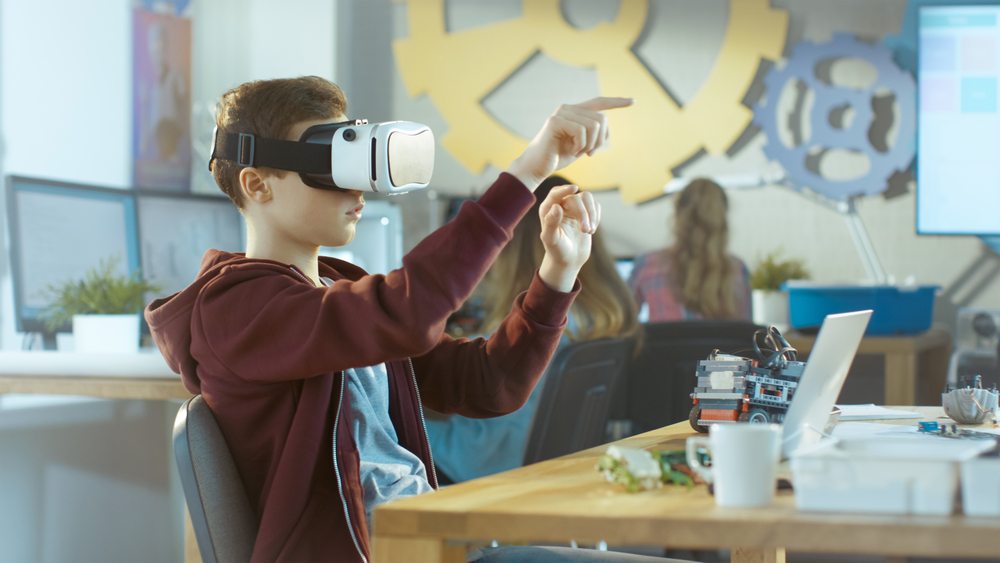Ar, Qr And Beyondslcsd Educational Technology Resources
- Ar Qr And Beyondslcsd Educational Technology Resources Inc
- Ar Qr And Beyondslcsd Educational Technology Resources List
- Ar Qr And Beyondslcsd Educational Technology Resources Online
- Ar Qr And Beyondslcsd Educational Technology Resources Llc
Apr 2, 2017 - AR Augmented Reality in the Classroom. Mrs Barnett First Grade. Free iPad teacher course. Explore more than 7,216 'Ar Piggy Bank' resources for teachers, parents and pupils. Trisha Templeton, teacher librarian at Daramalan College, defines augmented reality (AR), explores its role in education, and suggests some basic considerations for teachers getting started with AR. The technology revolution, pervasive use of the internet, and plethora of personal devices have changed the way society engages in employment. Dec 25, 2020 - Explore Briony Watson's board 'AR and VR' on Pinterest. See more ideas about augmented reality, augmented virtual reality, educational technology.

Ar Qr And Beyondslcsd Educational Technology Resources Inc
Teaching with QR, AR, and VR Technology allows educators to transform teaching and learning by engaging and empowering students in ways previously inconceivable. In recent years, software has been advancing exponentially allowing educators to facilitate and inspire creativity, collaboration, communication, and creativity skills.
HARP, an AR game designed to teach math and science literacy skills to middle school students, was developed with funding from the U.S. Department of Education by researchers at the Harvard Graduate School of Education, the University of Wisconsin at Madison, and the Teacher Education Program at MIT.

In HARP, students use Dell Axim handheld computers and GPS technology to correlate their real-world locations to their virtual locations in the game’s digital world.
As students move around their physical location, such as a school playground or sports field, a map on their handheld computer displays digital objects and virtual people who exist in the AR world that has been superimposed onto the physical world.
The School in the Park program lets students explore Asian art and folktales using AR experiences to enhance learning.

The program uses the Samsung Moment—a Google Android device—and its indoor component uses QR Code, a two-dimensional barcode, to trigger an AR event.
Outside, students use Layar, an AR reality browser that overlays data using the smart phone as a viewfinder—meaning that students see what is in front of them but can overlay virtual information on top of that physical world.
For instance, as a student approaches a sculpture or another work of art, information might pop up on the student’s smart phone that explains the history behind that piece.
“Of course, there’s a learning curve that goes along with any new technology, but the thing that’s really promising about this type of experience is how engaging it is for students,” O’Shea said. “Anything that engages students is a net benefit in the long run.”
And although the technology itself might seem intimidating, the real challenge is the availability of content.
“The barrier is not so much technology, but curriculum. There’s just not a lot of curriculum developed that can be widely used—it tends to be localized,” O’Shea said. For instance, students from Pennsylvania are unlikely to travel to San Diego to participate in this particular AR experience.
Ar Qr And Beyondslcsd Educational Technology Resources List
“There’s a policy issue involved as well: Schools tend to fear this technology, they fear cell phones, because they see the negative,” he said.

And while AR works well as an engaging tool, it doesn’t necessarily work as well for deep content learning, because students spent a large portion of time figuring out how to work the devices.
Ar Qr And Beyondslcsd Educational Technology Resources Online
“A logical next step is to [have] multiple AR sites, so students can have more engaging experiences over time, eventually getting to the point where students are creating their own experiences,” he said. “That’s where I see this going.”
The School in the Park program lets teachers and students expand their learning opportunities, said Kitty Gabriel, of the San Diego City Heights Collaborative. Gabriel presented the AR project within the School in the Park program.
“We like to have authentic experiences in cultural learning opportunities that often our kids don’t have access to,” she said. Instead of simply reading about Siddhartha relief sculptures, she added, students must find them in the museum.
“Having handheld devices for our students is an opportunity that promises equitable access for students who otherwise wouldn’t be able to experience this,” Gabriel said.
Gabriel said the AR experiences that students gain in the program contribute to critical thinking and problem-solving skills—two in-demand 21st century skills.
Ar Qr And Beyondslcsd Educational Technology Resources Llc
Links:
